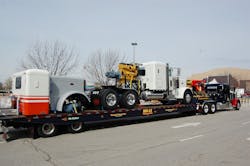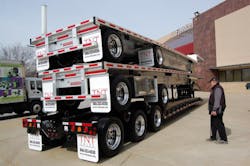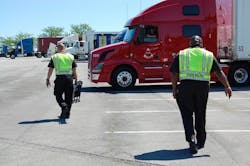What your drivers (still) don’t know about roadside inspections
Back in the day, when Andy Blair served as a Department of Transportation (DOT) officer, he used the North American Standard Out of Service Criteria book to write tickets and place trucks out of service (OOS) during roadside inspections.
Now, he’s urging fleets and their drivers use the book as a tool to help keep their trucks in service during inspection season – especially where cargo securement is concerned.
You see, the annual 72-hour Roadcheck inspection blitz overseen by the Commercial Vehicle Safety Alliance's (CVSA) occurs June 6 through 8 this year and will focus on cargo securement. And the aforementioned “OOS book” Blair referenced contains information on load securement that carriers – especially commodity specific haulers – and their drivers need to know.
“If you are a commodity specific hauler, then you have some very specific rules that apply to you,” he explained. “If you don't follow these rules, you could very well find your truck being placed OOS.”
Specific rules cover logs, dressed lumber, metal coils, paper rolls, concrete pipe, intermodal containers, light vehicles, heavy vehicles and equipment, flattened or crushed vehicles, roll off containers, hazardous materials or “hazmat” loads, plus large boulders.
If none of these categories apply, then a motor carrier or owner-operator falls under the general freight rules, Blair pointed out.“This Roadcheck is coming; everybody knows what it’s going to be about,” he stressed. “This year’s focus is on load securement, so now is the time for people to be aware of the regulations.”
Here are a few more tips Blair shared with Fleet Owner ahead of the 2017 Roadcheck inspection blitz:
“Some of these guys [drivers] are dependent on someone in a building securing their load,” he added. “They don’t bother checking load securement and they leave."
But once you leave the yard, it’s your baby, Blair warned. “The officers are going to be trained and ready,” he added. “The question is, are your drivers going to be trained and ready for this?”
For any further questions, please email Andy Blair at [email protected].
About the Author

Cristina Commendatore
Cristina Commendatore is a past FleetOwner editor-in-chief. She wrote for the publication from 2015 to 2023.


